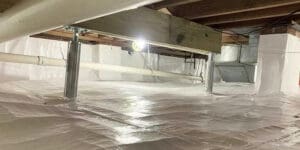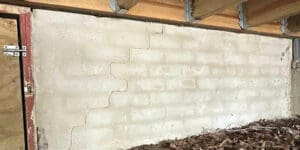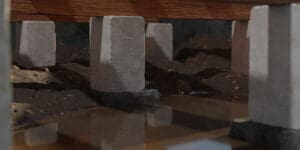Most homeowners know that termites can damage the wooden support structures in a crawl space. However, few know how to recognize the signs of termite infestation. Recognizing the signs of termite infestation and termite damage early are key to avoiding costly repairs. In this article, we’ll review the signs your crawl space might have a termite problem and what to do about it before these pests have a chance to cause significant structural damage to your home’s foundation.
Signs of Termites and Termite Damage in a Crawl Space
Damaged Wood
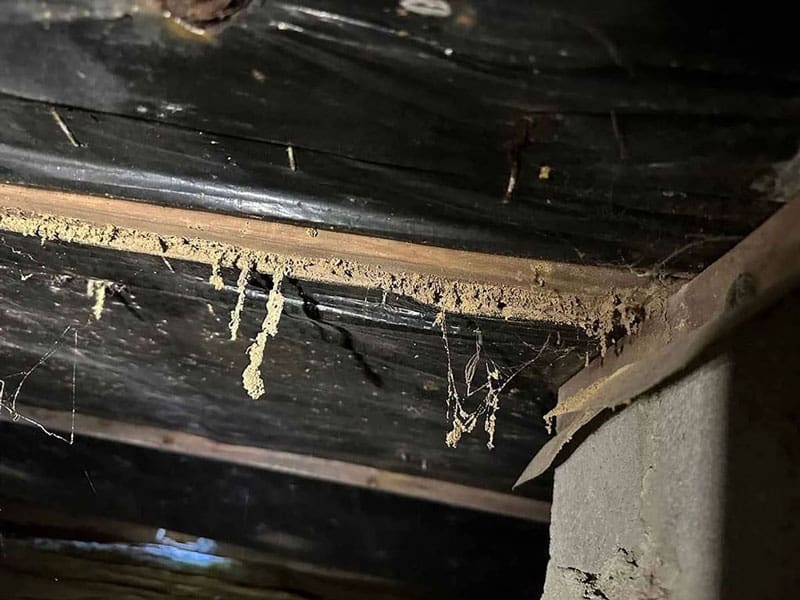
The most obvious sign of termites in your crawl space is damaged wood. Since termites use wood as a food source, they will be happy to chew on timber structural supports.
When termites chew the wood in your crawl space, it will undergo multiple noticeable changes. For instance, the wood will likely have long cracks and gaps while also showing discoloration and a spongy texture.
Noticing damaged wood is critical as it can compromise the structural integrity of your crawl space. As termite wood damage spreads, beams, joists, and other wooden structures in your crawl space can fail.
Termite Droppings
Termite droppings look like tiny pellets, each less than 1/16 of an inch in length, and have a light brown color similar to wood. Termites often drop their feces in prominent piles near the wood they consume.
Termite Wings
There are various types of termites in a termite colony. Some have wings larger than their bodies. When these winged termites find a mate, their wings fall off. Therefore, if you notice transparent, oval-shaped wings about one inch long in your crawl space, that’s a strong sign termites are present. Since detached wings indicate termite reproduction, you can rest assured the termite population in your home is growing, even if you don’t see the termites themselves.
Dead Termites
The presence of dead termites is one of the surest signs you’re dealing with an infestation. After all, if you see dead termite bodies, the odds are there are living ones nearby. However, identifying a dead termite is easier said than done. As noted above, there are multiple types of termites, each with a different appearance.
Worker termites are often the smallest at about ⅛ of an inch long. They have a light tan color, small pinchers, and a thorax that appears entirely fused to their abdomen.
Soldier termites are similar in size to worker termites. However, soldiers tend to have a darker color, especially on their heads, and they have much larger pinchers.
Lastly, there are winged termites mentioned previously. These termites have bodies similar to worker termites, but the main difference is they have wings about one inch long.
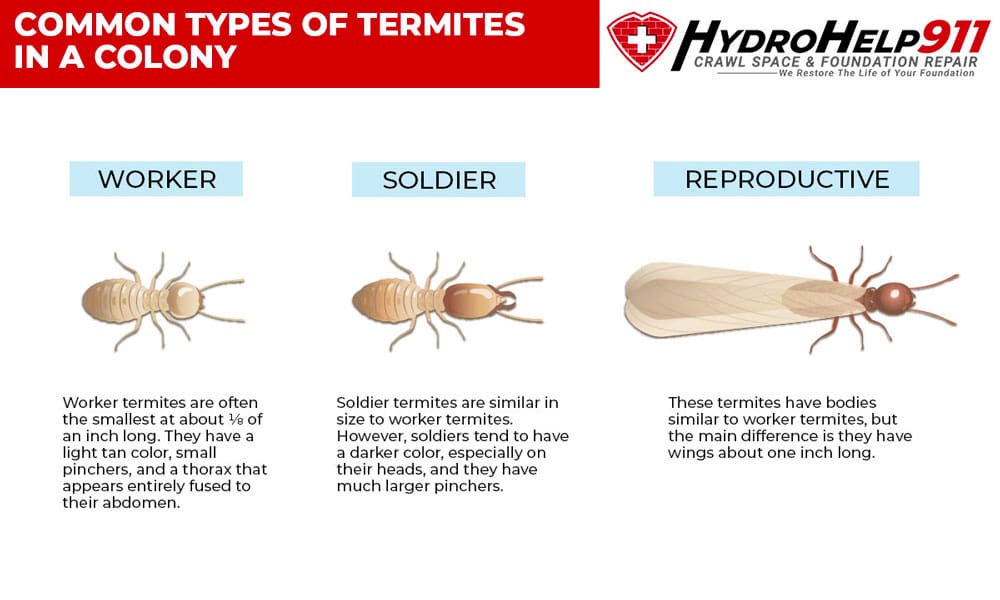
Mud Tubes
Termites depend on moisture to survive; if their conditions become too dry, they will quickly perish. To avoid that, termites form moist mud tubes to travel safely. Mud tubes consist of termite saliva, dirt, and other materials. The tubes typically form on the exterior surface of your foundation, and they can be several inches long and wide. The presence of these tubes indicates termites have entered your crawl space. If you notice them, calling pest control services is your best next step.
Cracked or Bubbling Paint
Cracks and bubbles in paint can also indicate the presence of termites. Since termites must avoid drying out to survive, they tend to generate a lot of moisture. As this moisture accumulates below a layer of paint, it is common for the paint to form bubbles and cracks in some cases.
Bubbling paint is not always a sign of termite damage. Therefore, if you are unsure what caused your paint cracks and bubbles, check your crawl space for pests.
Foul Odors
Termites themselves do not have a distinct smell. However, termite activities can cause the places they infest to have an unpleasant odor. As noted above, termites need moisture to survive. Moisture encourages the growth of mold and mildew, as well as wood rot, creating a musty smell which flows up into your home’s living area. If your home smells musty, you can assume you have a problem with excessive moisture.
What to Do if You Find Signs of Termites
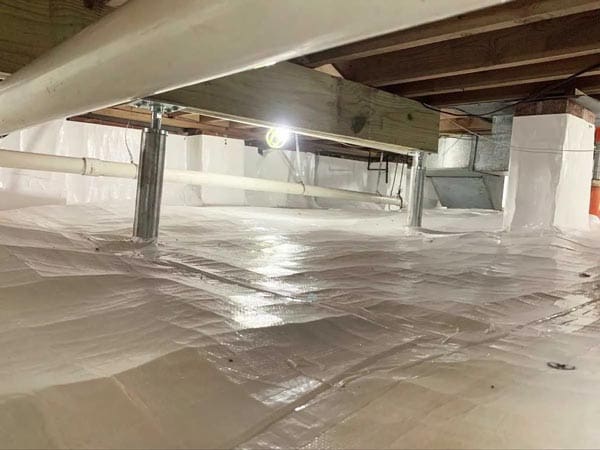
If you find signs of termites in your home’s crawl space, the best approach is to hire a pest control company to identify and remove the termites from your home.
Professional pest control teams are well-prepared to diagnose and treat pest problems in your home’s crawl space. Contacting one of these teams as soon as you see one or more of the signs described above is the best way to minimize the damage termites cause.
If the termites have already caused a considerable amount of damage, you’ll need repairs as well. Therefore, having a foundation repair team you can trust is essential.
Get Help from a Professional
As noted above, seeking the help of a professional pest control team is the first step to take when dealing with termites in your crawl space. However, once the pest control team finishes their work, you may also require attention from a foundation specialist.
If you are a homeowner who has experienced crawl space damage, whether from termites or not, and live in or around Charlotte, North Carolina, HydroHelp911 is here to help. We have extensive experience providing structural repairs for crawl spaces.

